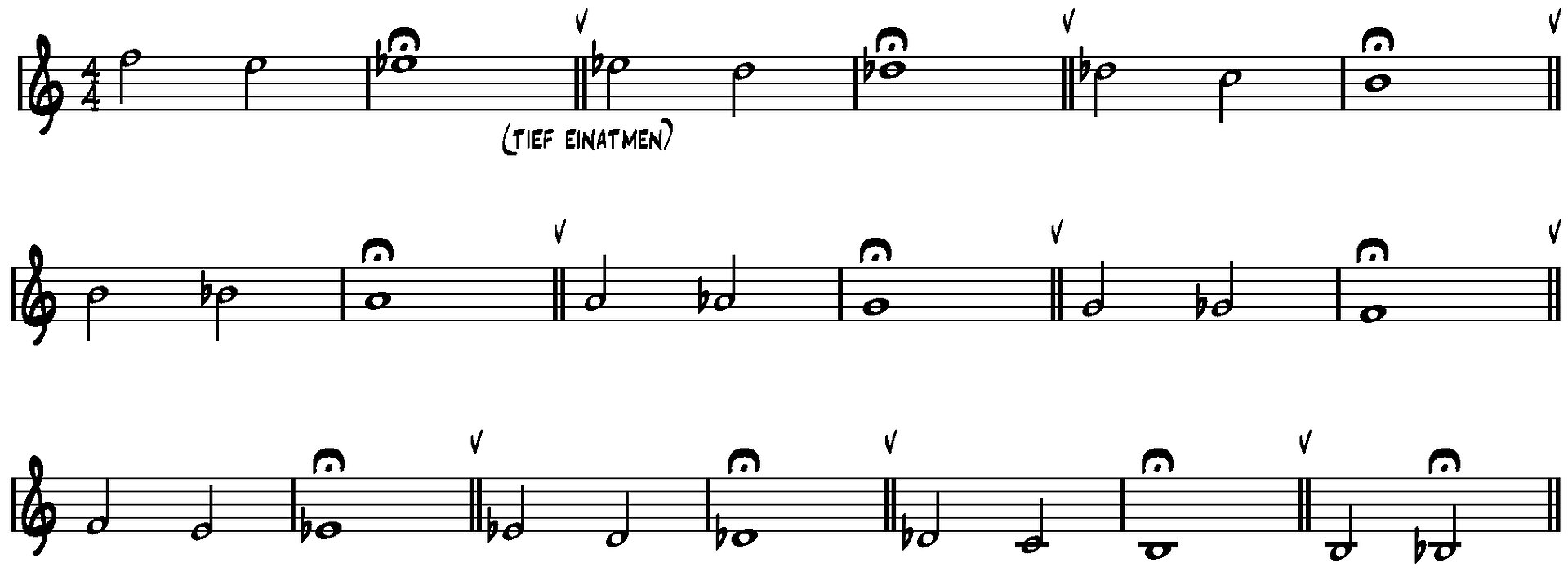Attack exercises for sax players
Introduction
Talking about "sound" with a saxophone player, and you’ll probably end up discussing subjects like mouthpieces, reeds and other accessories. Some saxophone players even tend to believe that a good sound can only be achieved with certain saxophone brands, sometimes even with a specific model from that maker, or with special mouthpieces and reeds. Hardly anybody mentions sound creation, embouchure techniques and targeted exercise, so much so actually, that I sometimes think that saxophone players prefer philosophizing about equipment to practicing. In this workshop, I would like to challenge this, give tips and show you exercises in this respect.
Saxophone embouchure
Unfortunately, it takes a while before one’s saxophone starts sounding like a musical instrument (rather than a fog horn). The most important aspect of a good saxophone sound (apart from correct breathing) is the embouchure, i.e. the positioning of one’s lips.
You can prepare your lips by pronouncing the consonant "v" ("vee") several times. Doing so indeed forces you to slightly contract your lips and pull them backwards. This is very similar to how your lips should be positioned while playing the saxophone. So, again say "v" and then slide the mouthpiece into your mouth.
The upper incisors should be positioned at 1~2cm from the mouthpiece tip on the sloping part. Press your lower lip (and your jaw) against the reed. The rest of your lips needs to enclose the mouthpiece to prevent the air from escaping (remember how you pronounced the "v").
The important part to remember is that you shouldn’t apply too much pressure on your lips. The upper incisors need to hold the mouthpiece, while the lower lip should press against the reed"”but too much pressure will keep the reed from vibrating freely and produce a squeezed sound, while your lips and jaw may start feeling awkward after a while. Another important condition for a correct embouchure is the support provided by one’s diaphragm, i.e. a good breathing technique.
Finding the correct position on the mouthpiece takes some trial and error. Small changes to the embouchure can have a dramatic effect on the sound. One important aspect is indeed how far you slide the mouthpiece into your mouth, i.e. where you position your upper incisors. While the mouthpiece is barely inserted, the sound tends to remain soft, weak and somewhat dull. The further you insert the mouthpiece, the more powerful the sound becomes. But don’t insert it too far, because doing so may lead to a hollow, nasal and uncontrollable sound.
Importance of the lower lip
Varying the position of your lower lip can have an equally dramatic effect on your sound. Until a few years ago, sax players were told to wrap the lower lip around their teeth"”nowadays, a relaxed position or even an outward bend are preferred.
Wrapping your lower lip around your teeth tends to produce a smooth tone. Bending it outward creates a brighter sound, with a lot of harmonics, which are, however, more difficult to control. I suggest you try out the various possibilities I just mentioned to find out which embouchure comes closest to the sound you have in mind.
Attack exercises for sax players
The best embouchure exercises are based on long, sustained notes. Such exercises benefit all sax players, whether pros or beginners, classically-trained or jazz musicians. We will start this exercise with the F in the second octave, because that note responds relatively easily and usually sounds rather good. Next, tie an E and an Eb to your F, and try to make these notes sound as good as your initial F. Sustain the Eb as long as you can, without allowing it to tremble or quiver.
Take enough time to breathe in. Then continue with the next three notes, etc., and cover your saxophone’s entire range. Play this exercise slowly and calmly"”tempo and stress are of no consequence here. A good embouchure and the good sound that goes with it takes some practicing, i.e. several months. Don’t despair if you don’t seem to notice any difference after a few days. Just keep doing it, because it will allow you to develop your own sound.
Yours,
![[Translate to French:] [Translate to English:] Dirko Juchem](/fileadmin/_processed_/8/1/csm_Dirko_Unterschrift_d783087c95.jpg)


